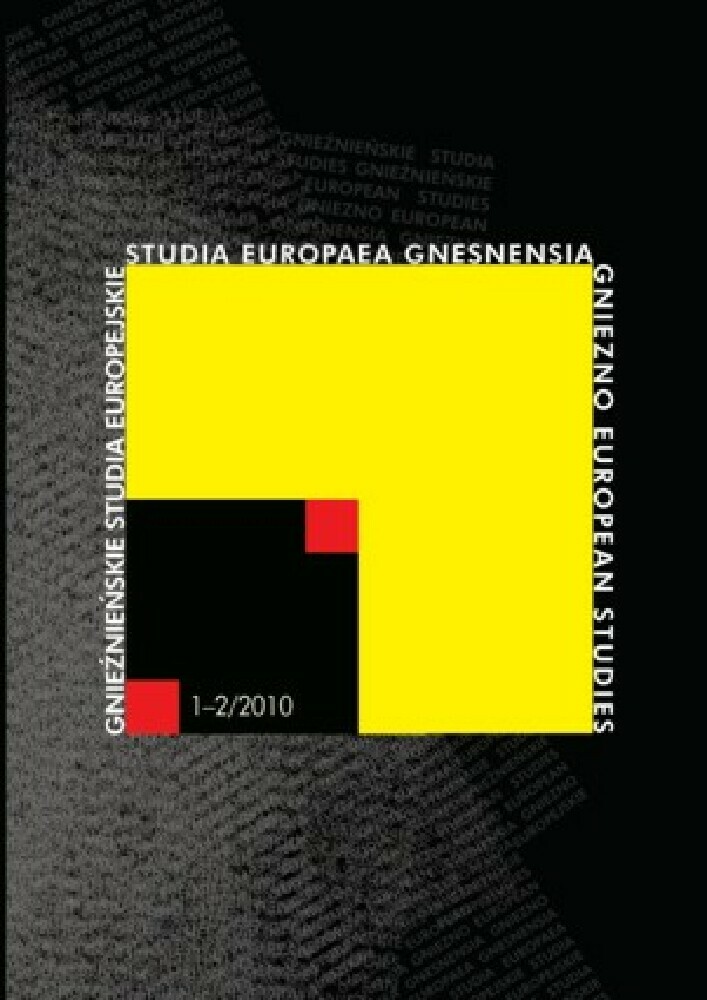Abstrakt
In my paper, I intended to present the interpretational possibilities of a selected theoretical model, taken from the comprehensive landscape current, focusing on three burial grounds with stone circles in Pomerania, which present considerable analytical potential. These sites have a long standing record of research, relatively well explored acreage, substantial literature and, fortunately enough, some data on the possible past natural environment, provided by palinological research. I have conducted phenomenological analysis of the space according to the tenets of its creator, Ch. Tilley. It is a two-stage analysis, combining empirical description and theoretical interpretation. The sites I have selected, i.e. Odry, Węsiory and Grzybnica, approached as phenomena found in the Wielbark culture, were, in my opinion, perfectly suited to be subjected to such analysis. The latter confirmed the sacral and symbolic character, while thanks to the detailed description at the interpretation stage, I managed to outline their significance as an important site where the worlds of the living and the dead came into contact. A site chosen in the past by the human chiefly due to its location in the natural surroundings, which points to presence of an important relation between man and environment, a relation which made burial grounds become sites, experienced and created by man in the landscape. I am of the opinion that the work in which I utilised phenomenological analysis advanced by Ch. Tilley provides a positive answer to the question concerning the relation between man and his surroundings. The model proved valid in my research, allowing to obtain something in the shape of a picture of the past landscape. At the beginning, I wrote that “I would like to find man behind the silent stones of forgotten necropolises.” I have no doubt that I have managed to accomplish it. Even if the discovered, yet unspeaking man, who lived almost 2000 years ago, was presented by means of contemporary language of the researcher. No theoretical model can produce concrete, verifiable and conclusive answers. Thanks to my analysis I arrived at a probable depiction of past reality, which nevertheless will remain yet another interpretation of the same research material. In my opinion, this is precisely what constitutes the work of an archeologist, who ceaselessly poses questions and looks for the answer, trying to divine the silent past and to revive it in his/her words.
Bibliografia
Bender B. (red.), Introduction. Landscape — Meaning and Action, [w:] Landscape Politics and Perspectives, Oxford 1993, s. 1–18. DOI: https://doi.org/10.4324/9781003575269-1
Bender B., Stonehenge. Making Place, Oxford 1998;
Grabarczyk T., Kultura wielbarska na Pojezierzach Krajeńskim i Kaszubskim, Łódź 1997.
Grabarczyk T., Stan i potrzeby badań nad pradziejami Borów Tucholskich, [w:] Prace i Materiały Muzeum Archeologicznego i Etnograficznego w Łodzi 34, 1990, s. 293–298.
Ingold T., The Temporality of the Landscapes, [w:] World Archaeology 25, 2, s. 152–174. DOI: https://doi.org/10.1080/00438243.1993.9980235
Jasiewicz K., Elementy myśli fenomenologicznej w archeologii na przykładzie analizy stanowiska z okresu wpływów rzymskich i okresu wędrówek ludów w Otalążce, woj. mazowieckie, Poznań 2002, s. 40.
Kiszka J., Lipnicki L., Porosty na głazach na prehistorycznym cmentarzysku „Kręgi Kamienne” w Borach Tucholskich, [w:] Fragmenta Floristica et Geobotanica 1, 1994, s. 97–105.
Kmieciński J., Zagadnienia tzw. kultury gocko-gepidzkiej na Pomorzu Wschodnim w okresie rzymskim, Łódź 1962.
Kmiecińskiego J., Blombergowej M., Walenty K., Cmentarzysko kurhanowe ze starszego okresu rzymskiego w Węsiorach w pow. kartuskim, [w:] Prace i Materiały Muzeum Archeologicznego i Etnograficznego w Łodzi, 1966, s. 37–122.
Kokowski A., Archeologia Gotów, Lublin 1999.
Makiewicz T., Prinke A., Teoretyczne możliwości identyfikacji miejsc sakralnych, Przegląd Archeologiczny 28, s. 57–90.
Posern-Zieliński A., Inspiracje fenomenologiczne w archeologicznych studiach nad religiami społeczeństw pradziejowych. Refleksje etnoreligioznawcze, [w:] Przegląd Archeologiczny 30, s. 187–200.
Tilley Ch. , A Phenomenology of Landscape — Places, Paths and Monuments, Oxford 1994;
Tuan Y.F., Przestrzeń i miejsce, Warszawa 1987.
Walenta K, Kręgi kamienne i kurhany w okresie wpływów rzymskich na Pomorzu, [w:]Archaeologica Baltica 2, 1977, s. 99–111.
Walenta K., Badania nad okresem późno lateńskim i rzymskim, [w:] Acta Universitatis Lodziensis Folia Archaeologica 19, 1995, s. 57–69. DOI: https://doi.org/10.18778/0208-6034.19.05
Walenta K., Kręgi kamienne na cmentarzyskach kultury wielbarskiej na Pomorzu i ich związek z obrzędami i praktykami kultowymi, [w:] Acta Universitatis Lodziensis Folia Archaeologica 25, 2007, s. 129–154. DOI: https://doi.org/10.18778/0208-6034.25.07
Woźny J., Symbolika przestrzeni grzebalnych w czasach ciałopalenia zwłok na ziemiach polskich, Bydgoszcz 2000, s. 5-40.
Wrzosek W., Historia — kultura — metafora. Powstanie nieklasycznej historiografii, Wrocław 1995, s. 56–70.
Zapłata R., Archeologiczne studia nad przestrzenią. Zastosowanie Systemów Informacji Geograficznej w badaniach nad wczesnośredniowiecznym osadnictwem grodowym na Pomorzu [maszynopis pracy doktorskiej], Poznań 2005.
Licencja
Copyright © 2010 by IKE and PTPN
